STONINGTON — Jon Imber doesn’t have the strength to walk the 30 feet from the side door of his house to his little studio out back. His wife, Jill Hoy, and a studio assistant, Holley Mead, each take an arm and lift him out of his kitchen chair, help him out the door, down the ramp and across the damp green grass.
Imber shuffles as the women hold him up and guide him to his painting studio. Inside, he rests several minutes on a stool, then – by some miracle – rises and stands before a blank, 24-by-24-inch canvas. Barely able to hold a brush and racing against the sudden certainty of death, Imber, 63, is determined to channel every ounce of creative energy left in his body before a neurological disease makes it impossible to paint.
An art professor at Harvard for 27 years with an illustrious career as an abstract expressionist, Imber has long split his time between Maine and Massachusetts. In the summer of 2012, the artist had been feeling weakness in his right arm, his painting arm, when he went to his doctor. A series of tests ruled out things such as carpal tunnel or spine impingement. Appointments with acupuncturists and chiropractors yielded to consultations with neurologists.
The diagnosis came in the fall of last year: amyotrophic lateral sclerosis, or ALS, a progressive and fatal neurological disease that attacks the nerves responsible for controlling muscles.
He’s been experiencing a steady decline ever since.
In a cruel twist for the painter, Imber lost the use of his right arm first. Unbowed, he taught himself to paint as a lefty. Now, both arms have atrophied.
Still, he paints.
ALS has challenged Imber to confront one final time the question at the root of his decades-long life as an artist: How much of a painter am I?
To what lengths will he go to create? What level of satisfaction will he enjoy?
“I found out that it really means a lot to me, so I want to keep doing it. I feel a real sense of accomplishment,” Imber said in a halting, raspy voice that ALS – also known as Lou Gehrig’s disease – has slowed and weakened. “You know, there is a romantic answer to that question, and it turns out that it is accurate. I had no idea how much it meant to me to be painting, and not just filling up time and canvas, but really painting. Meaning, I would take a big risk every day.”
Jon Imber was diagnosed with ALS in September 2012. These images are representative of his work prior to his diagnosis as well as his more recent work, some of which was created after he lost the use of his arms.
LEARNING A NEW WAY TO PAINT
Imber’s paintings are in public and private collections across New England, including the Museum of Fine Arts in Boston, the Farnsworth in Rockland and the Currier in Manchester, N.H. He has spent summers in Stonington for 25 years, and taught figure drawing to Harvard undergrads since 1986. He also has enjoyed a successful commercial career, commanding five-figures for large oil landscapes.
Every time he crosses his studio threshold and picks up a brush, he puts himself to the greatest test an artist can face. Day to day, he doesn’t know if he can complete the work or what it will look like. He has reinvented how he works and how he sees the world, while inspiring friends and family who marvel at his spirit and determination.
Imber has learned a new way to paint, twice. First he learned to paint left-handed, and lately has adapted and improvised by devising work-arounds to his atrophied arms.
Mead, one of his studio assistants, makes extensions for his brushes by stapling stirring sticks to the brush handles. Imber holds the extension between the thumb and forefinger of his left hand, and steadies that hand with the back of his right hand, which is twisted inward. He guides both with impulsive, instinctive thrusts that begin on the balls of his feet and pulse through his knees, hips and shoulders.
Doing an awkward dance with his easel, Imber directs the brush by throwing his weight toward the canvas, resulting in sweeping, gestural swirls of oil.
Hoy, who also paints, calls Imber one of the most courageous painters she’s ever known. In the face of a bleak diagnosis, Imber has kept his spirit bright and found the strength to work, she said. “It’s hopefully not the last year of painting, but it may well be,” she said. “He better try to hit bedrock as deeply as he can while (he has) those abilities.”
He has made more than 100 paintings since August, and can’t recall a creative burst when he has felt more alive and accomplished. Before heading back to Massachusetts in mid-November, he finished more than a painting a day, a dizzying pace.
How much of a painter is he? He’s never felt better about his work, and never felt more sure of himself as an artist.
If he dies tomorrow, he will die knowing he did his best work until the very end. He did not compromise and did not settle.
“I hope to come back,” Imber said days before leaving Stonington for the winter. “If I can make it another summer, fine. But I may not be able to paint much longer. It’s very hard. I feel like if I am painting next summer, it will be with my foot or mouth.”
He jokes that if he does come back to Stonington next summer, he will have to find an old church ceiling to paint, where he can lie on his back and work like Michelangelo.
‘HIS SPIRIT IS ASTONISHING’
Imber and Hoy stayed longer in Maine this fall. They normally would be back at their home in Somerville, Mass., Imber teaching at Harvard as he has done for nearly three decades. But they extended their time in Maine while workers prepared an elevator at their Somerville co-op. He is on leave from his teaching job at Harvard.
In Stonington, they hosted a steady parade of friends and family, acquaintances old and new, who came to say hello and goodbye, to pay their respects and wish them well. Now and again, someone would rub Imber’s back.
Imber encouraged his guests to stay long enough to paint their portrait. An abstract expressionist known for big, lush and lively canvases, Imber this summer returned to portraiture, an early art-career love. One hundred of the most recent portraits, all completed since August, hang through Dec. 10 at Haystack’s Center for Community Programs in Deer Isle.
Stu Kestenbaum, Haystack’s director, was struck by the immediacy of the portraits. He recognized many of the faces on the wall when he visited Imber in his studio in October. But that wasn’t the point. The faces on the wall exuded a spirit that Imber encouraged and captured, said Kestenbaum, who was among the 100-plus who sat for a portrait.
While sitting in the studio watching as Imber painted him, Kestenbaum observed an artist determined to paint at any cost, to suffer discomfort and risk his own safety for the sake of a few ragged marks of oil on canvas. A lesser artist would concede his time left to the ravages of the disease.
Imber just keeps working, day after day.
“You are the person you are, you are not the condition you have,” Kestenbaum said. “He has this disability, but that’s not what it’s about. It’s about this ability.”
Imber has been an uplifting presence in the community, Kestenbaum said. People have learned from the grace that he has exhibited. “It’s one of the worst diagnoses you can hear,” Kestenbaum said. “And yet, his spirit is astonishing.”
Imber pronounces this body of work as satisfying as anything he’s ever done. These are not precise renderings of his subjects, but suggestive portraits that capture their energy, spirit and essence. They are fast and loose – first impressions of his subjects, some he knows well and others he is meeting for the first time.
“In addition to my output and I think the really, really high quality of my work, I would like to stress that, above everything else, I think my new work is really tough and really expressive, and there was no leaning on facility,” Imber said. “Like raw emotion. I have no way I can do anything but kind of raw, expressive gestures. And I’m very proud of it. It’s what I always wanted in painting. And now I can get there without facility.”
His move to Maine caused a shift in his work, said his boss at Harvard, Cathy McCormick, director of programs for Harvard’s Office for the Arts. As a young painter in the 1970s, Imber made a lot of figurative work, including large allegorical portraits. In Maine, he became an abstract expressionist, who focused on the landscape.
‘THE JOY HE GETS FROM PAINTING’
Peggy Greenhut Golden, owner of Greenhut Galleries in Portland, has sold Imber’s work for decades. He is among the most popular artists at Greenhut because his paintings are expressive and energetic, she said. “One of his strokes has so much energy in it, and sometimes defiance,” she said. Those same traits surface in these new portraits, Golden noted.
McCormick called the portraits “stunning, which isn’t surprising to me. He is very able. He is as powerful a portrait painter as he is a powerful abstract landscape painter.”
What surprises McCormick is Imber’s “outpouring of explosive energy.”
Imber is surprised by it as well. “Good art is not planned,” he said. “I mean, the really cool thing is that I had no idea I was going to start painting portraits like a madman. I didn’t think I had it in me, and basically, I don’t. After a painting session, my body is pretty tired.”
What is left of his muscles misfire all the time, leaving his body rippling with pulsing waves that never stop. He is tired even when he sleeps.
But something happens when he gets into the studio. On legs that cannot walk, he is able to rise and stand. With hands that cannot lift, he is able to hold a brush.
“When I am thinking about my painting, I’m not thinking about my legs. It’s really a wonderful thing,” Imber said. “I can’t stand for an hour or two, but they don’t bother me when I’m painting.”
The first few strokes might be a little rough. The next two feel better. “An hour or two later, I can’t believe what I have just done,” Imber said. “Day after day – I’m amazed at myself.”
The artist laughed at his immodesty.
In the studio, Imber’s painterly instincts take over. He can’t mix his own paint, but has trained Mead well. She is one of three or four studio assistants Imber and Hoy hired this summer.
He tells her what color paints and how much to mix, what kind of brushes he wants, how to prepare the canvas.
He sits on the stool as he waits for his paints to be prepared, a painting bib wrapped around his midsection and a pillow resting on his lap to take the pressure off his shoulders. Their banter is casual but purposeful. He tells Mead to add “maybe a touch more” of a certain color to the mixture she is making.
“Is a touch three-eighths or less?” Mead asks, adding to a visitor, “One nice thing about Jon, he’s pretty easygoing about this.”
She asks if the new mixture is better. “Too much?”
“Nah,” Imber shrugs. “What the hell.”
Mead helps Imber off the stool, positions the brush in his left hand and backs away.
His approach is physical, as he wills his body to move. Every few minutes, he stops to observe. Mead hands him a different brush, adjusts his smock, helps him with a sip of water, which he drinks with a straw.
Occasionally, he sits and rests. He worries that when he is working quickly he will lose his balance and collapse into the easel.
Maine filmmaker Richard Kane filmed Imber this fall. Kane calls Imber a hero for moving beyond his disability to make art against the odds. “The wonder of it all is to see the joy he gets from painting,” Kane wrote in an email. “The laughter, the humor, so often black, but very funny, brings me to tears. … I am so grateful for Jon to be teaching me about grace in the face of one’s mortality.”
Suzette McAvoy, director of the Center for Maine Contemporary Art in Rockport, is working with Imber on a 10-year retrospective that will open next May. “Jon Imber: Force of Nature” will put his recent portraits in context with his career, McAvoy said. The exhibition will include large-scale landscapes and seascapes, as well as recent work.
When McAvoy met with Imber in his studio in October, she sat for a portrait while they discussed the show. “It was totally unexpected,” she said of her session. “Totally unexpected and totally humbling.”
The exhibition will be the first encompassing look at Imber’s career that CMCA has hosted since 2000, she noted.
“It’s time. I consider him one of our major contemporary painters, consistently working in Maine. He’s certainly an influence on a number of younger painters as well,” she said.
In the days before he left Maine for Massachusetts, Imber expressed a desire to attempt what he expected would be his final landscape painting. With his new approach, he wanted to try to paint a cloud formation that he painted for the first time years ago. A postcard image of the original painting, announcing a long-ago exhibition, is tacked to the studio wall.
Imber was mostly curious what the clouds would look like if he painted them today, “just to surprise myself. … It might be too much. But it’s nice to leave on a note of something new.”
Bob Keyes can be contacted at 791-6457 or at:
bkeyes@pressherald.com
Twitter: pphbkeyes
Send questions/comments to the editors.



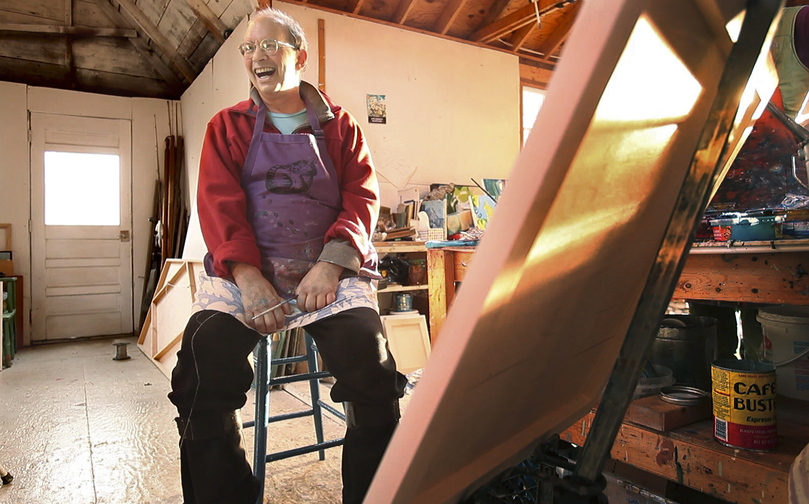
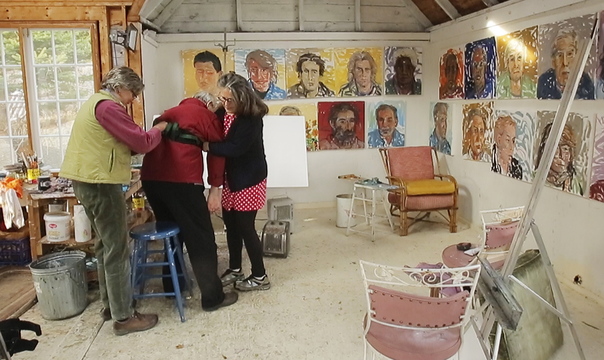
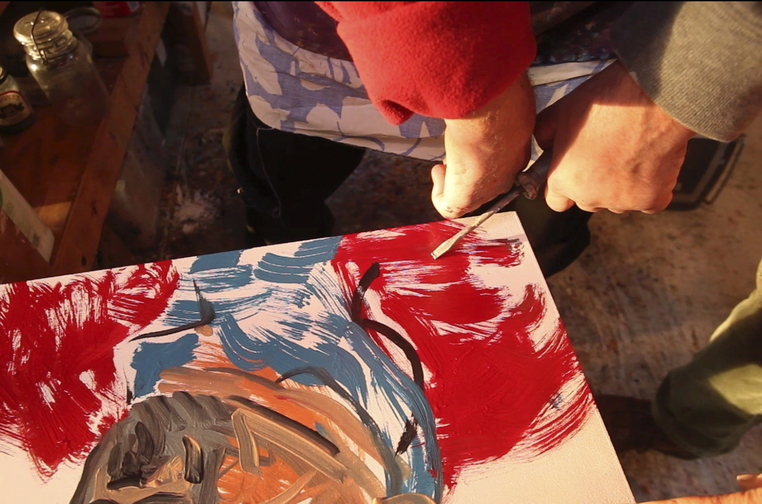
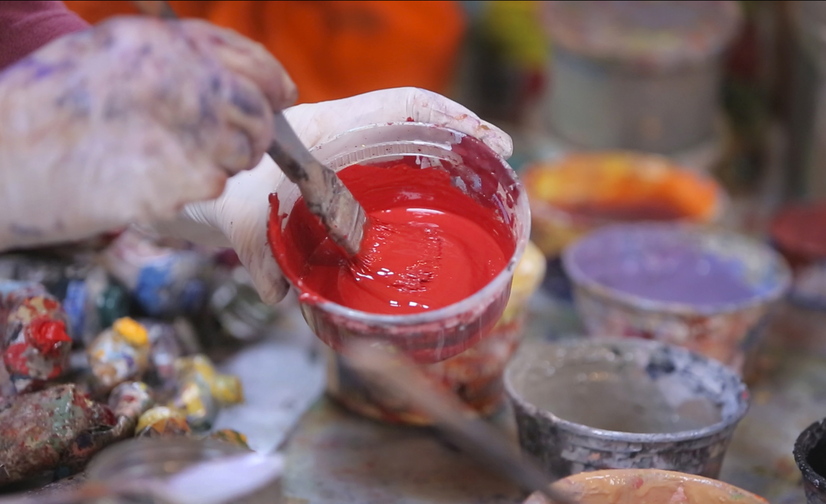
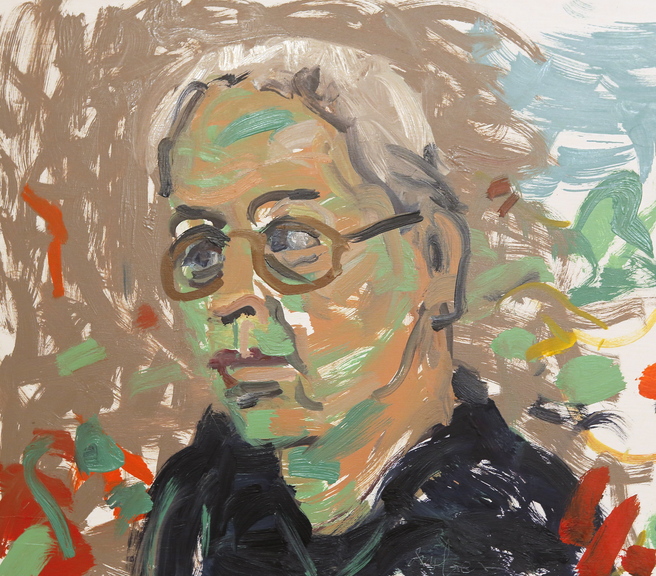
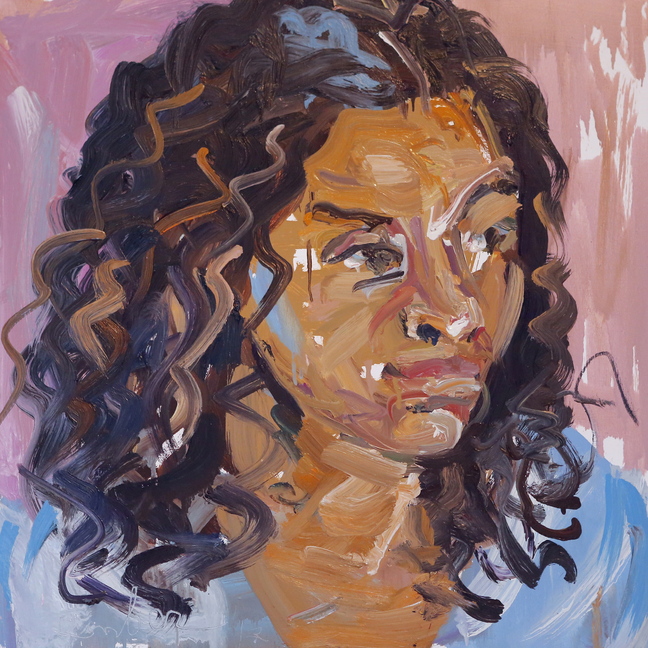
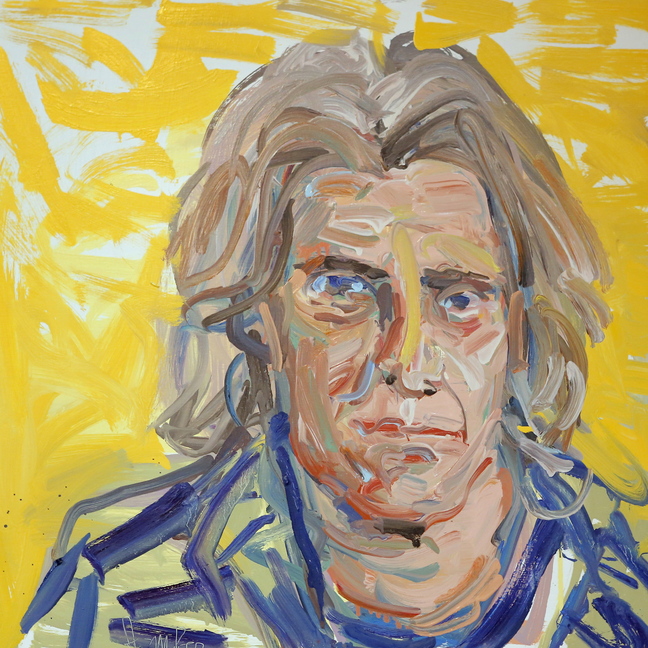
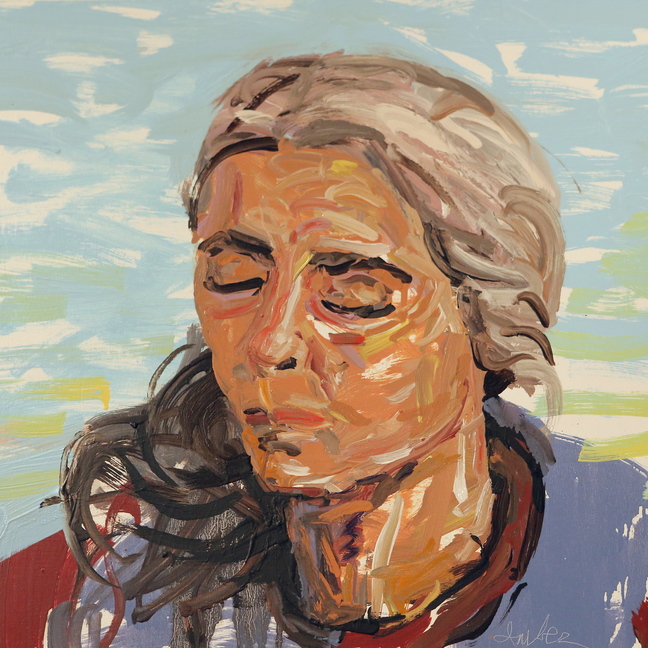


Success. Please wait for the page to reload. If the page does not reload within 5 seconds, please refresh the page.
Enter your email and password to access comments.
Hi, to comment on stories you must . This profile is in addition to your subscription and website login.
Already have a commenting profile? .
Invalid username/password.
Please check your email to confirm and complete your registration.
Only subscribers are eligible to post comments. Please subscribe or login first for digital access. Here’s why.
Use the form below to reset your password. When you've submitted your account email, we will send an email with a reset code.